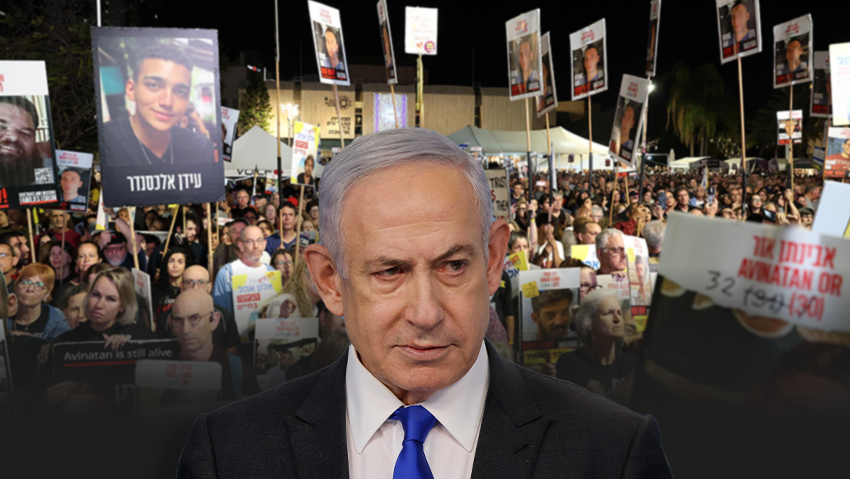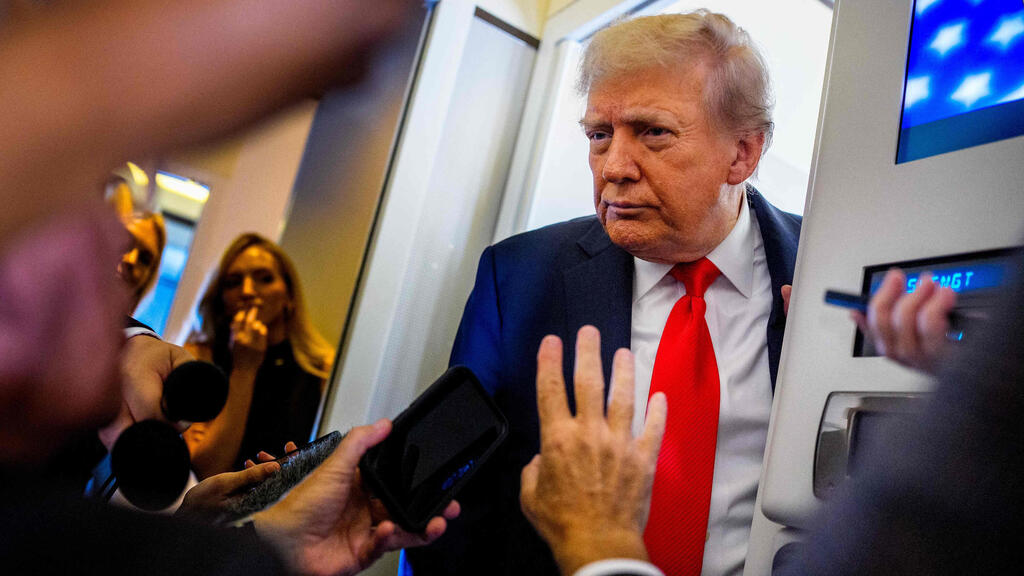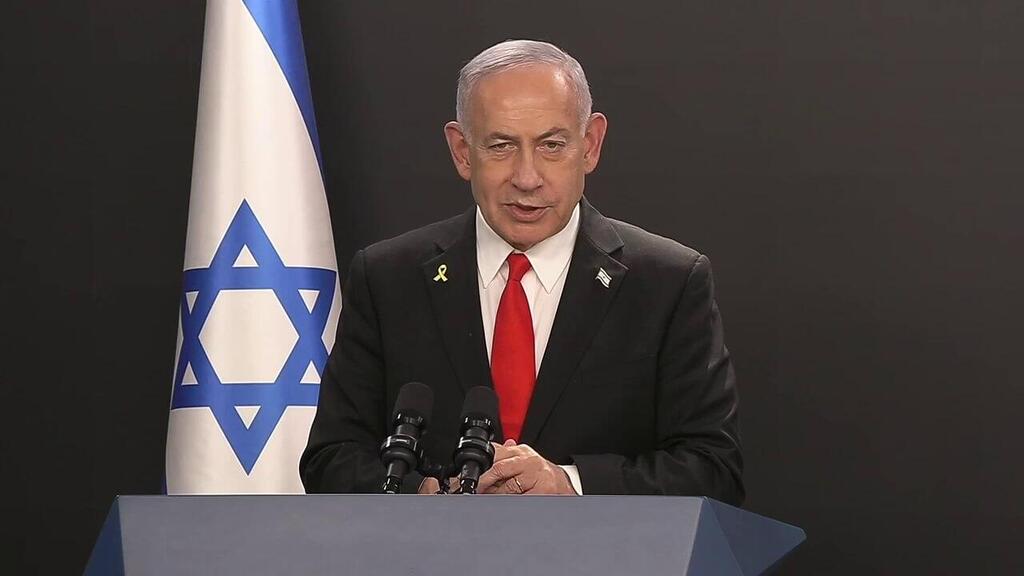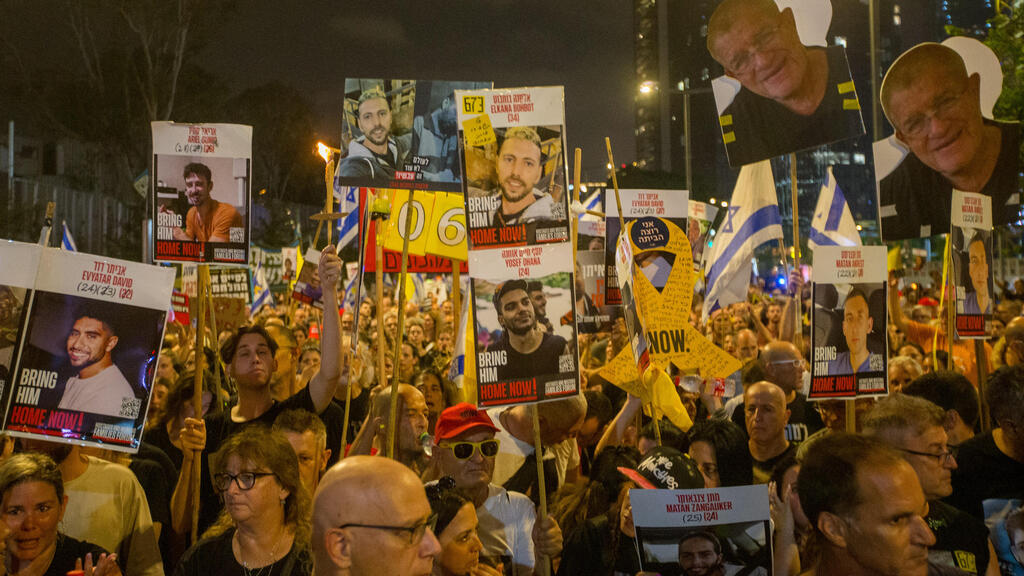4 View gallery


The ceasefire proposal ball is now in Israel’s court
(Photos: Dana Kopel, Mark Israel Salem)
Since Hamas’ reply was received Monday evening, Prime Minister Benjamin Netanyahu has held consultations with his negotiating team but has not yet convened the security cabinet, which is set to meet Thursday. Some analysts view Israel’s insistence on the release of all hostages as a negotiating tactic aimed at pressuring Hamas to make further concessions.
Hostage affairs coordinator Gal Hirsch told families Tuesday that he could not share details, citing heavy secrecy over the talks. “The discussions, processes and all prisoner-and-missing-person activity are taking place around the clock under strict blackout,” Hirsch said. “The concern and the desire for more information are completely understood. I apologize for not sharing at this time; I will update when possible.”
Qatari Foreign Ministry spokesperson Majed al-Ansari confirmed that Hamas had given a positive response to the proposal after Qatari Prime Minister Mohammed al-Thani met Egyptian President Abdel Fattah el-Sisi in Cairo. He described the proposal as “the best option,” offering a path to a comprehensive agreement. “If we fail to reach a deal, Gaza will face an even greater humanitarian disaster,” he warned.
Al-Ansari said no deal could be finalized until Israel responds. “We have no timetable for Israel’s answer, but we hope it will be quick and positive,” he said, adding that Hamas’ response was “positive and almost identical to what Israel had previously accepted.” He stressed that, if a cease-fire is reached, it must be implemented immediately, “unlike what happened in the past.”
Asked about Israel’s newly approved plan to occupy Gaza City, al-Ansari replied: “Some are talking not only about Gaza, but about occupying Arab states altogether.” He said there was Arab-Islamic coordination against Netanyahu’s recent comments about a “greater Israel” and warned that settlement expansion would not bring peace or security.
The new mediation plan narrows the gaps that led to the collapse of talks nearly a month ago. It is based on U.S. envoy Brett McGurk’s framework, with slight adjustments that could pave the way for a partial deal.
Three and a half weeks ago, Hamas demanded the release of 200 prisoners serving life sentences, while Israel agreed to 125. Hamas has now lowered its demand to 140–150, leaving a gap of just 25. The group has also shown flexibility on the buffer zone, now accepting a 800 meter–1,000 meter perimeter, compared to Israel’s demand for 1,000 meters–1,200 meters.
An Arab diplomatic source called the proposal “McGurk Plus,” saying it builds on the old framework. If Israel agrees, talks could be held in Doha or Cairo to finalize remaining details, with McGurk possibly traveling to the region.
4 View gallery


Hamas wants written guarantees from the US
(Photo: Andrew Harnik / Getty Images / AFP)
Meanwhile, Egyptian sources told Saudi outlet Al-Arabiya that “the security situation does not allow for the release of all living hostages in a single phase.” They said Israel is expected to respond before the end of the week, mediators have invited Israel’s negotiating team for further talks, and another meeting between mediators and senior Israeli security officials is planned. According to these sources, Hamas would not be responsible for internal security in Gaza under the cease-fire, a new aid distribution system would be put in place, and Hamas’ weapons would be addressed during the truce period.
Prime Minister Benjamin Netanyahu reiterated Monday that Hamas must not be allowed any role in governing Gaza in the future. After a visit to the Gaza Division, where he met with the defense minister and IDF chief of staff to discuss military plans, Netanyahu said: “Like you, I hear the media reports, and from them you can conclude one thing — Hamas is under enormous pressure.”
He outlined five key points for any potential deal: the disarmament of Hamas; the return of all hostages, both living and dead; the demilitarization of Gaza; continued Israeli security control in the Strip, including over the security perimeter; and the establishment of an alternative civilian administration, neither Hamas nor the Palestinian Authority.
However, the new mediation proposal does not address these cabinet-approved conditions — which were set during the same meeting that authorized an IDF plan to occupy Gaza City. Instead, the proposal defers most “day after” questions for 60 days of negotiations.
A source familiar with the talks told CNN that Hamas is “insisting” on written guarantees from the United States that the cease-fire would remain in place after 60 days. According to the source, Hamas wants assurances — reportedly involving Donald Trump — that Israel will not resume fighting. It is still unclear what kind of guarantees Washington is prepared to offer, and who would provide them.
Other elements of the proposal remain unchanged: Hamas would release half of the hostages — both living and deceased — in exchange for a 60-day cease-fire: 10 living captives and 18 bodies. During that period, negotiations would continue over ending the war. This portion is identical to the original framework. Hamas’ response has been sent for professional review to identify possible sticking points, but U.S. officials are expected to accept the deal, which would then increase pressure on Israel to agree.






